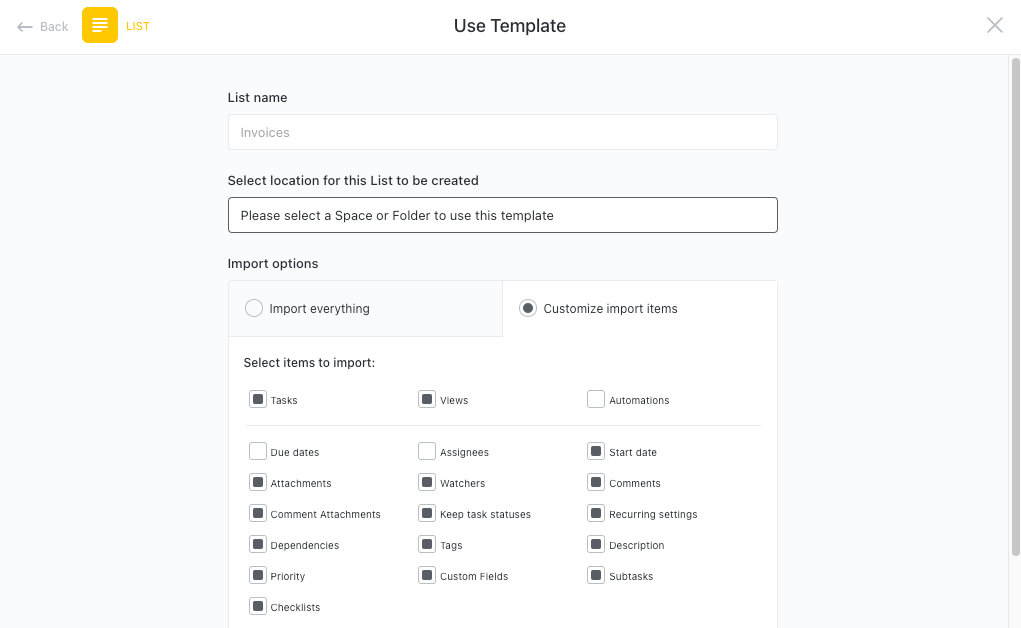Being a customs agent is no easy task. With the ever-changing landscape of international trade and the complexities of customs compliance, it's crucial to stay on top of potential risks. That's where ClickUp's Customs Agents Risk Register Template comes in.
This template is specifically designed for customs agents to:
- Systematically identify and assess potential risks in customs processes
- Track and manage compliance with trade regulations and security protocols
- Collaborate with stakeholders to mitigate risks and ensure smooth operations
Whether you're dealing with trade restrictions, security threats, or other challenges, ClickUp's Risk Register Template will help you navigate the customs landscape with confidence. Get started today and streamline your risk management processes like never before.
Benefits of Customs Agents Risk Register Template
Customs Agents Risk Register Template helps customs agencies and agents effectively manage potential risks and ensure smooth customs processes by:
- Providing a comprehensive overview of potential risks and their impact on customs operations
- Enabling systematic identification and assessment of risks related to customs compliance, trade regulations, and security threats
- Facilitating proactive risk mitigation strategies to minimize disruptions and delays in the flow of goods
- Enhancing collaboration and communication among customs agents and stakeholders for effective risk management
Main Elements of Customs Agents Risk Register Template
ClickUp's Customs Agents Risk Register template provides a comprehensive solution for managing risks in the customs agency industry.
Here are the main elements of this template:
- Custom Statuses: Track the progress of risks with 9 different statuses, including Occurred, Mitigated, and Active, helping you stay on top of risk management.
- Custom Fields: Utilize 7 custom fields such as Consequence, Description, and Risk Level to capture all relevant information about risks, ensuring accurate risk assessment and mitigation.
- Custom Views: Access 6 different views, including Costs of Risks, List of Risks, and Risks by Status, to gain insights into the overall risk landscape, monitor risk responses, and identify areas of improvement.
- Getting Started Guide: Get started quickly with a comprehensive guide that walks you through the template setup and highlights key features and best practices for effective risk management.
With ClickUp's Customs Agents Risk Register template, you can proactively identify, assess, and mitigate risks to ensure smooth operations and compliance in the customs agency industry.
How to Use Risk Register for Customs Agents
Navigating the complexities of customs regulations can be a daunting task, but with the Customs Agents Risk Register Template in ClickUp, you can stay organized and mitigate potential risks. Here are four steps to effectively use this template:
1. Identify potential risks
Start by identifying the various risks that could impact your customs operations. These risks can include delays in customs clearance, compliance issues, incorrect documentation, or changes in trade regulations. By identifying these risks upfront, you can create a proactive plan to address them.
Use custom fields in ClickUp to categorize and prioritize each potential risk.
2. Assess the likelihood and impact
Once you have identified the risks, assess the likelihood and impact of each one. This step involves analyzing the probability of the risk occurring and the potential consequences it could have on your customs operations. Assign a numerical value to each risk to determine its level of severity.
Utilize the Gantt chart view in ClickUp to visualize the timeline and impact of each risk.
3. Develop risk mitigation strategies
Based on the severity of each risk, develop strategies to mitigate or minimize their impact. These strategies can include implementing proper documentation procedures, conducting regular compliance audits, or establishing relationships with trusted customs brokers. Assign responsibility for each mitigation strategy to ensure accountability.
Create tasks in ClickUp to outline the specific steps and actions required for each risk mitigation strategy.
4. Monitor and review
Regularly monitor and review the risks and mitigation strategies outlined in the Customs Agents Risk Register Template. This step involves tracking the progress of implemented strategies, assessing their effectiveness, and making any necessary adjustments. Continuously updating and refining your risk register will help you stay ahead of potential issues.
Utilize the Automations feature in ClickUp to set reminders and notifications for regular risk review and monitoring.
By following these four steps and utilizing the Customs Agents Risk Register Template in ClickUp, you can effectively manage and mitigate the risks associated with customs operations, ensuring smoother and more efficient processes.

Get Started with ClickUp’s Customs Agents Risk Register Template
Customs agents can use the Customs Agents Risk Register Template to proactively identify and manage risks in international trade operations.
First, hit “Add Template” to sign up for ClickUp and add the template to your Workspace. Make sure you designate which Space or location in your Workspace you’d like this template applied.
Next, invite relevant members or guests to your Workspace to start collaborating.
Now you can take advantage of the full potential of this template to manage risks effectively:
- The Costs of Risks View allows you to evaluate the financial impact of each risk
- The List of Risks View provides a comprehensive overview of all identified risks
- Use the Risks by Status View to track the progress and resolution of each risk
- The Risks by Response View helps you analyze the effectiveness of mitigation strategies
- The Risks by Level View enables you to prioritize risks based on their severity
- Refer to the Getting Started Guide for a step-by-step walkthrough of the risk management process
- Organize risks into nine different statuses: Occurred, Mitigated, Occurred, Active, Active, Mitigated, Occurred, Active, Mitigated, to track their current state
- Regularly update the status of risks as they occur or are mitigated
- Continuously monitor and analyze risks to ensure compliance and minimize potential disruptions







